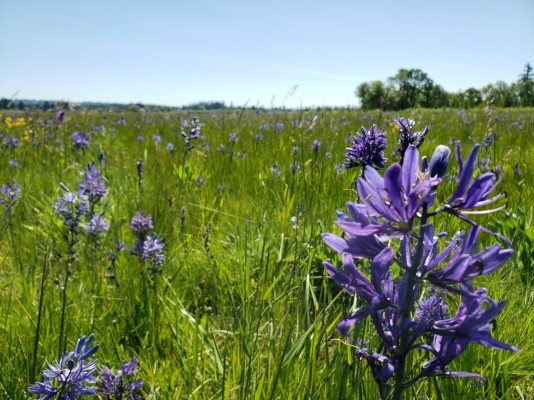 The Department of State Lands is committed to our government-to-government relations with Oregon’s nine federally recognized Tribal governments. This work is aligned with our values in collaboration, inclusion and natural resource stewardship. Some of the ways we pursue this work:
The Department of State Lands is committed to our government-to-government relations with Oregon’s nine federally recognized Tribal governments. This work is aligned with our values in collaboration, inclusion and natural resource stewardship. Some of the ways we pursue this work:
- Reaching out early and regularly to Tribal representatives about Department actions likely to affect Tribal members, natural resources, or cultural resources of Tribal interest.
- Helping Tribes protect cultural resources in Oregon through our programs.
- Providing opportunities for meaningful engagement, including government-to-government consultations and participation in Rulemaking Advisory Committees for proposed rules.
- Meeting regularly with individual Tribal governments, participating in tribal-state workgroups focused on natural resource management and protection of Tribal cultural resources, and attending the annual State-Tribal Summit.
- Training DSL employees on Tribal government, sovereignty and issues of interest to Tribal nations.
Current and Recent Initiatives
The South Slough Reserve has established strong partnerships with local Tribal governments to ensure the management of the Reserve is informed by Tribal knowledge and expertise. The Reserve and Tribes regularly collaborate on shared priorities across the sectors including research, monitoring, conservation, restoration, outreach, and training. A culturally significant canoe fragment that was found at Sunset Bay State Park, and the local Tribal governments were supportive of displaying the canoe fragment at the Reserve’s Interpretive Center. The Reserve and the Tribes are interested in using this fragment as an anchor for other cultural exhibits in the future.
In 2022 the Department received reports from the Burns Paiute Tribe, as well as law enforcement and local landowners, of individuals entering the lakebed of Crump Lake and removing, damaging, or destroying cultural, environmental, and state resources. The Director followed up by enacting an emergency closure. DSL completed the rulemaking process to define long-term solutions to protect the area and its cultural resource artifacts.
Learn more about this rulemaking initiative.
South Slough Reserve science staff continue to collaborate with the Coquille Indian Tribe and CTCLUSI to manage real-time water quality stations and to discuss data related to water quality in Coos Bay. Reserve staff have also been providing technical support to the Coquille Indian Tribe staff for new water quality monitoring efforts in Coos Bay and to help link Tribal station data to the Northwest Association of Networked Ocean Observation Systems. A recent past Margaret A. Davidson Graduate Research Fellow, funded through the National Oceanic and Atmospheric Administration, worked with the Reserve and the Confederated Tribes of the Coos, Lower Umpqua, and Siuslaw Indians to survey harmful algal blooms in the Coos estuary.
Managing Cultural Resources
Cultural resources provide meaning and connection for groups that have historically called this land home. Management and coordination around cultural resources is led by DSL's archaeologist. Impacts to cultural resources are avoided by reviewing proposed ground-disturbing activities on Oregon-owned lands and waterways and in the territorial sea. DSL's archaeologist also evaluates applications for authorizations to use Oregon-owned lands and waters and provides cultural resource evaluations for agency land sales and exchanges.
Federally Recognized Tribes of Oregon
Currently, 573 sovereign Tribal nations (variously called tribes, nations, bands, pueblos, communities, and Native villages) have a formal nation-to-nation relationship with the US government. They are legally defined as “federally recognized tribes” and recognized as sovereign governments. Tribal governments exercise jurisdiction over lands that would cumulatively represent the fourth largest state in the nation.
Learn more from the National Congress of American Indians.
Long before Oregon’s statehood in 1859, native people in Oregon lived on this land from time immemorial.
Oregon was the first state to pass a state-tribal government-to-government relations law. In 2001, Senate Bill 770 (SB 770) established a framework for communication between state agencies and Tribes. Effective government-to-government communication increases our understanding of tribal and agency structures, policies, programs, and history. These state and tribe relations inform decision makers in both governments and provides an opportunity to work together on shared interests.
The state statute created from SB 770 is
ORS 182.162-168, state agencies followed Executive Order
EO-96-30. This order, established in 1996, defined a process to "assist in resolving potential conflicts, maximize key inter-governmental relations, and enhance an exchange of ideas and resources for the greater good of all of Oregon's citizens."